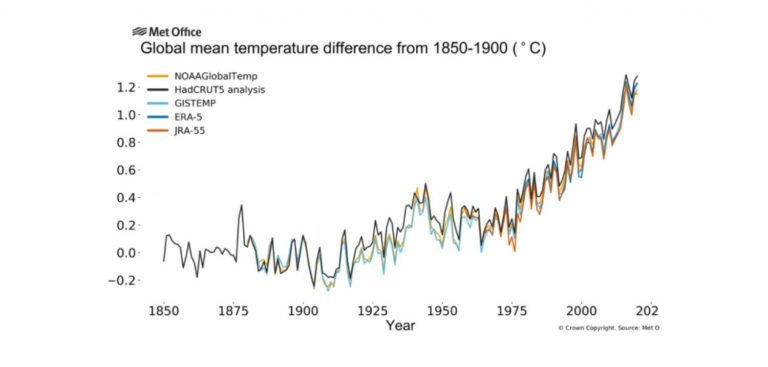Following the consolidation of five international data sets by the World Meteorological Organization (WMO), 2020 has been confirmed as one of the three warmest on record, on a par with 2016, though the cooling effect of La Niña saw heat levels reduce toward the end of the year.
All five data sets surveyed by the WMO concurred that 2011-2020 was the warmest decade on record, with the warmest six years all occurring since 2015, and 2016, 2019 and 2020 comprising the top three. The differences in average global temperatures across the three warmest years are indistinguishably small. This placed the average global temperature in 2020 at about 14.9°C, 1.2°C (± 0.1) above the pre-industrial (1850-1900) level.
“The confirmation by the World Meteorological Organization that 2020 was one of the warmest years on record is yet another stark reminder of the relentless pace of climate change, which is destroying lives and livelihoods across our planet. Today, we are at 1.2°C of warming and already witnessing unprecedented weather extremes in every region and on every continent. We are headed for a catastrophic temperature rise of 3-5°C this century. Making peace with nature is the defining task of the 21st century. It must be the top priority for everyone, everywhere,” said United Nations secretary-general António Guterres.
“The exceptional heat of 2020 is despite a La Niña event, which has a temporary cooling effect,” added WMO secretary-general Prof. Petteri Taalas. “It is remarkable that temperatures in 2020 were virtually on a par with 2016, when we saw one of the strongest El Niño warming events on record. This is a clear indication that the global signal from human-induced climate change is now as powerful as the force of nature.”
The WMO uses data sets (based on monthly climatological data from observing sites and ships and buoys in global marine networks) developed and maintained by the US National Oceanic and Atmospheric Administration (NOAA), NASA’s Goddard Institute for Space Studies (NASA GISS) and the UK’s Met Office Hadley Centre and the University of East Anglia’s Climatic Research Unit (HadCRUT).
The organization also uses reanalysis data sets from the European Centre for Medium-Range Weather Forecasts (ECMWF) and its Copernicus Climate Change Service, and the Japan Meteorological Agency (JMA).



